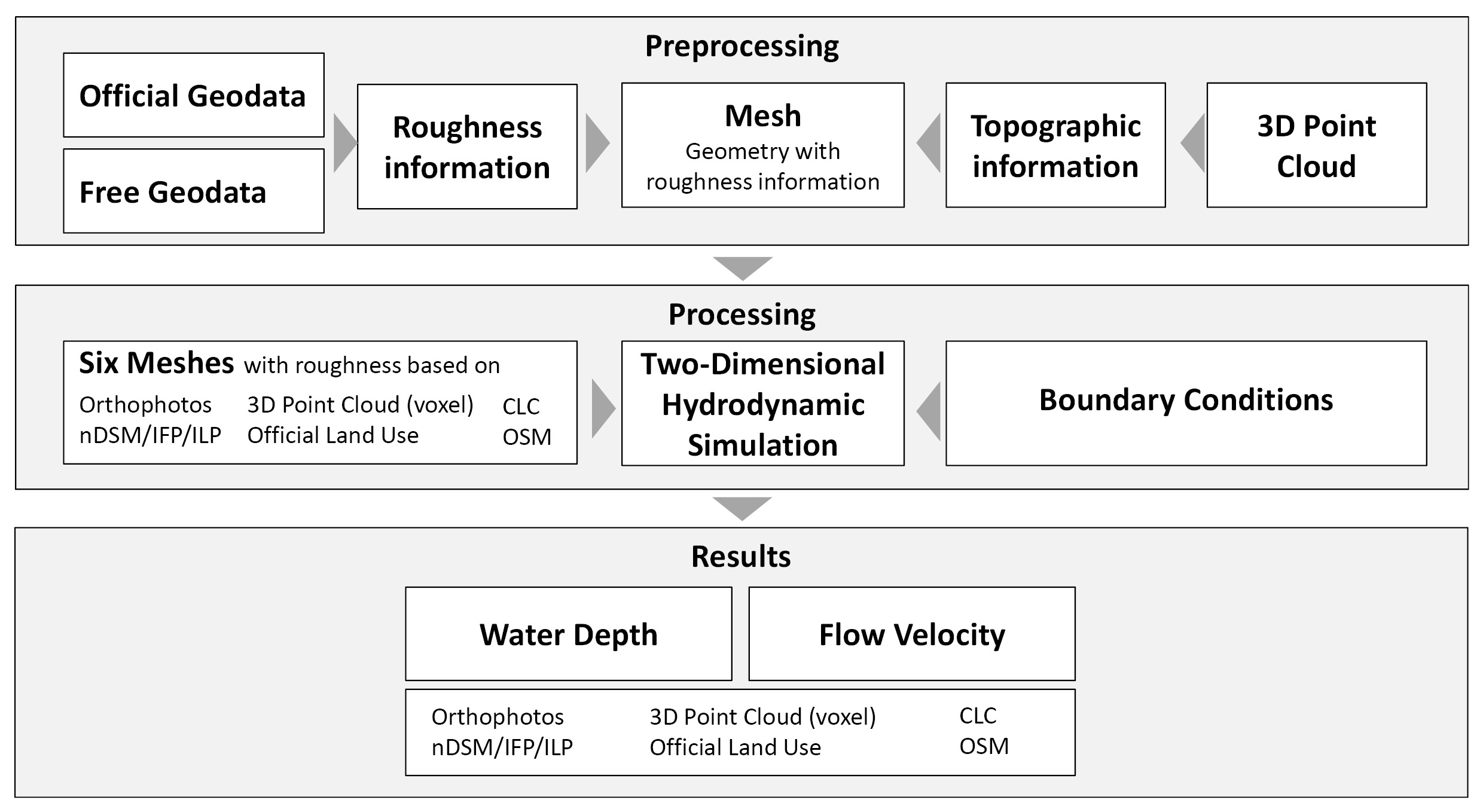Natural disasters like floods are a worldwide phenomenon and a serious threat to mankind. Flood simulations are applications of disaster control, which are used for the development of appropriate flood protection. Adequate simulations require not only the geometry but also the roughness of the Earth’s surface, as well as the roughness of the objects hereon. Usually, the floodplain roughness is based on land use/land cover maps derived from orthophotos. This study analyses the applicability of roughness map derivation approaches for flood simulations based on different datasets: orthophotos, LiDAR data, official land use data, OpenStreetMap data and CORINE Land Cover data. Object-based image analysis is applied to orthophotos and LiDAR raster data in order to generate land cover maps, which enable a roughness parameterization. The vertical vegetation structure within the LiDAR point cloud is used to derive an additional floodplain roughness map. Further roughness maps are derived from official land use data, OpenStreetMap and CORINE Land Cover datasets. Six different flood simulations are applied based on one elevation data but with the different roughness maps. The results of the hydrodynamic–numerical models include information on flow velocity and water depth from which the additional attribute flood intensity is calculated of. The results based on roughness maps derived from LiDAR data and OpenStreetMap data are comparable, whereas the results of the other datasets differ significantly.
Dorn, H., Vetter, M. & Höfle, B. (2014): GIS-Based Roughness Derivation for Flood Simulations: A Comparison of Orthophotos, LiDAR and Crowdsourced Geodata. Remote Sensing. Vol. 6(2), pp. 1739-1759. DOI:10.3390/rs6021739



